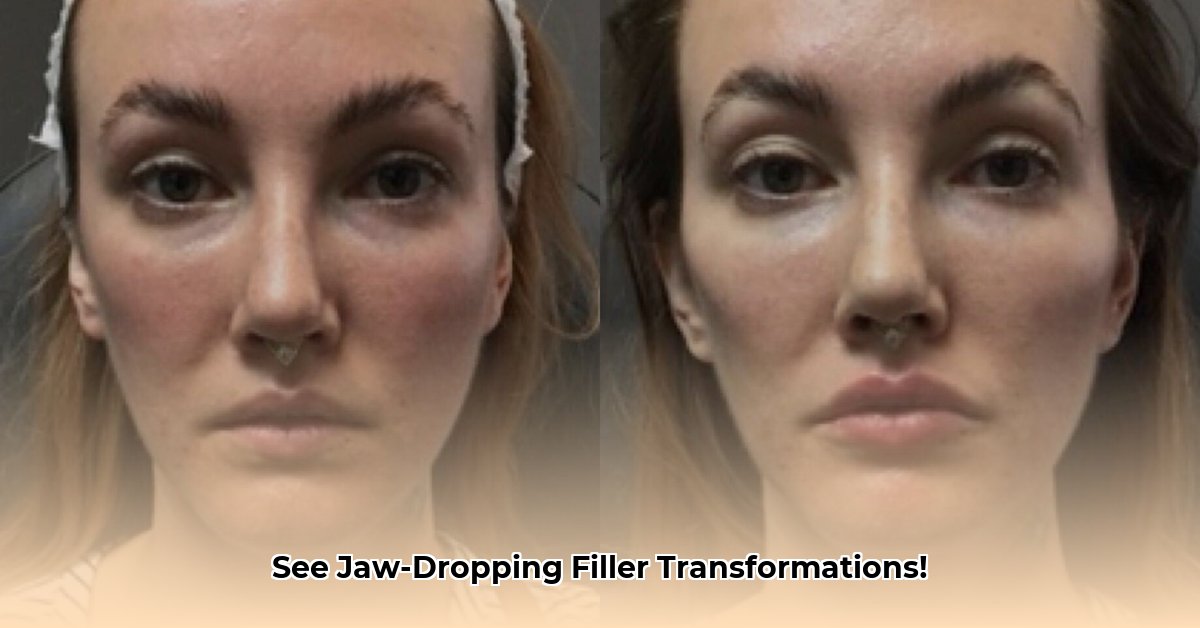Dermal fillers have become increasingly popular for restoring youthful volume and smoothing wrinkles. This comprehensive guide provides everything you need to know about dermal fillers, from understanding the different types to finding a qualified provider. We’ll explore the procedure, potential risks, costs, and even alternative treatments. Let’s dive in.
Understanding Dermal Fillers
Dermal fillers are injectable gels that restore facial volume, smooth wrinkles, and enhance contours. They’re minimally invasive, offering a noticeable refresh without surgery. These fillers work by filling in areas where volume has been lost or by augmenting existing features.
Exploring Filler Types
Choosing the right filler depends on your specific needs and goals. This table outlines the most common types:
| Filler Type | Longevity | Ideal Use | Pros | Cons |
|---|---|---|---|---|
| Hyaluronic Acid (HA) | 6-18 Months | Lips, cheeks, under-eye area, fine lines | Natural-looking, reversible. | May require more frequent touch-ups; some swelling and bruising are possible. |
| Calcium Hydroxylapatite (CaHA) | 12-18 Months | Cheeks, jawline, deeper wrinkles | Long-lasting, may stimulate collagen production. | Can feel firmer, slightly higher risk of small bumps. |
| Poly-L-lactic acid (PLLA) | Up to 2 Years | Overall volume loss, stimulating collagen | Gradual, natural-looking results, builds volume over time. | Needs multiple treatments, not an instant fix. |
Research continues to explore new filler materials, so the future of facial rejuvenation constantly evolves.
Dermal Fillers: A Visual Journey
Before-and-after photos showcase the transformative potential of dermal fillers. Remember, individual results vary, and a consultation with a qualified professional is crucial for setting realistic expectations.
Lips: Enhancing Your Pout
(Insert multiple high-quality before-and-after photos of lip filler treatments showcasing diverse results – subtle to dramatic – in individuals of different ages and ethnicities)
Lip fillers can create subtle volume or a dramatic pout, enhancing shape and smoothing lip lines. HA fillers are typically preferred for lip enhancements.
Cheeks: Restoring Youthful Fullness
(Insert multiple high-quality before-and-after photos of cheek fillers)
Cheek fillers can revitalize your appearance by restoring lost volume and providing a subtle lift. HA and CaHA fillers are commonly used for cheek augmentation.
Under-Eyes: Brightening and Refreshing
(Insert multiple high-quality before-and-after photos of under-eye fillers)
Under-eye fillers can address hollowness, dark circles, and tear troughs, creating a more refreshed appearance. HA fillers are often chosen for this delicate area.
Nose, Temples, Jawline, Marionette Lines, Forehead: Subtle Refinements
(Continue this photo and explanation format for each area: Nose, Temples, Jawline, Marionette Lines, and Forehead. Include diverse before-and-after photos showcasing a range of results.)
- Nose: Fillers can subtly refine the nose shape, addressing minor imperfections without surgery.
- Temples: Temple fillers restore volume, addressing hollowness that can make the face appear gaunt.
- Jawline: Jawline fillers can create a more defined and sculpted jawline.
- Marionette Lines: Fillers soften marionette lines, reducing the appearance of a downturned mouth.
- Forehead: Forehead fillers smooth wrinkles and restore a more youthful appearance.
The Procedure: What to Expect
- Consultation: Discuss your goals with a qualified provider. They’ll assess your facial structure and recommend a personalized treatment plan.
- Preparation: The treatment area is cleansed, and a numbing cream may be applied for comfort.
- Injection: The filler is injected using a fine needle or cannula.
- Aftercare: Follow your provider’s instructions for minimizing swelling and bruising.
Risks and Side Effects
While generally safe, dermal fillers carry potential risks, including:
- Common: Swelling, bruising, redness, tenderness. These are usually temporary.
- Less Common: Infection, allergic reactions, vascular occlusion (blockage of a blood vessel). Choosing a skilled injector minimizes these risks.
Cost of Dermal Fillers
Costs vary depending on the filler type, amount used, and provider’s fees. Generally, expect to pay several hundred dollars per syringe.
Finding a Qualified Provider
Choosing a board-certified dermatologist or plastic surgeon with extensive experience in injectables is paramount. Research providers, read reviews, and ask questions during your consultation.
Long-Term Effects and Maintenance
Dermal filler results are temporary. The longevity varies depending on the filler type. Maintenance treatments are needed to sustain the desired look.
Alternatives to Dermal Fillers
Other facial rejuvenation options include:
- Botox: Relaxes muscles to reduce dynamic wrinkles (like frown lines).
- Facelifts: Surgically lifts and tightens sagging skin for more dramatic results.
- Laser Treatments: Improve skin texture and tone.
- Fat Grafting: Uses your own fat to restore volume.
Discuss these options with your provider to determine the best approach for your needs.
Conclusion: Your Path to Rejuvenation
Dermal fillers offer a powerful way to address aging concerns and enhance your natural beauty. Armed with this knowledge, you can make informed decisions about your treatment. Consult a qualified professional to determine if dermal fillers are right for you.
Disclaimer:* This information is for educational purposes only and does not constitute medical advice. Consult a qualified healthcare provider for personalized guidance.*
- Wellness Fair Ideas for Work to Boost Employee Wellbeing - December 15, 2025
- Affordable Employee Wellness Fair Ideas for Any Budget - December 14, 2025
- Employee Wellness Programs Strategically Benefit Employee Health And Retention - December 13, 2025
















